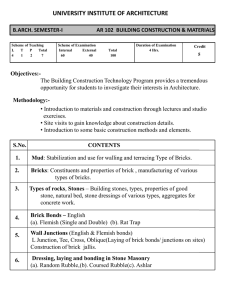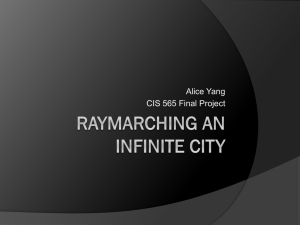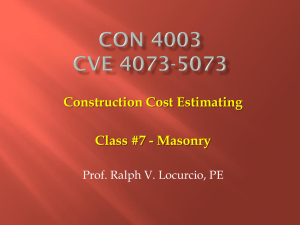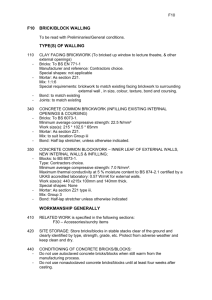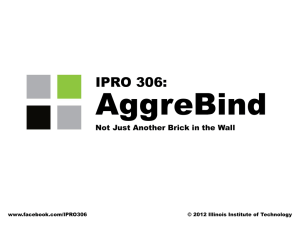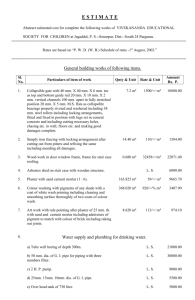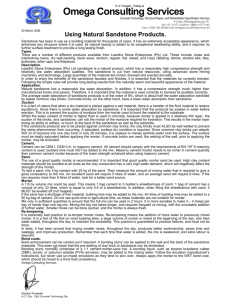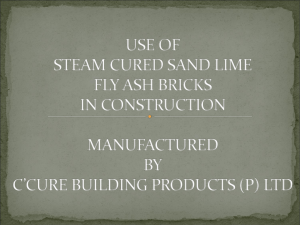Materials Used in the External Walls
advertisement
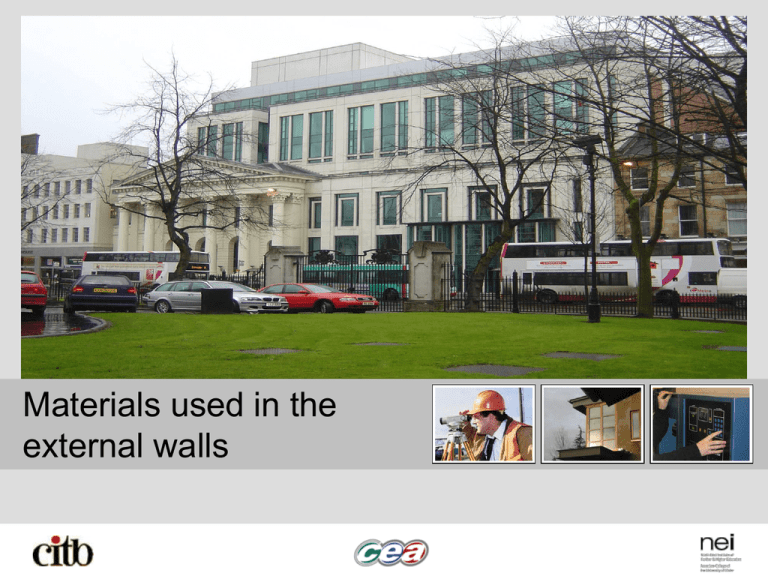
Materials used in the external walls Brick Bricks are probably the oldest manufactured material we have today. Although the method of production has changed, bricks still maintain their individual characteristics. Bricks have many advantages over other building materials , e.g. variety of colour, shape and texture. Essential features While bricks are produced to withstand load bearing compressive loads they must also be fairly impervious, weather / frost resistant and have an attractive appearance. Brick Types Clay brick These are made from clay composed mainly of silica and alumina with small quantities of lime, iron and manganese, which are moulded into shape and baked in a kiln. These are the most common type of brick used today Calcium silicate bricks These are made from sand and lime and hardened by exposure to steam at pressure. Brick Common brick These are generally building bricks which can vary considerably in quality and which do not have a decorative face. They are much cheaper and can be used for unseen work. Facing brick The term used to describe a brick specifically used for decorative appearance. Facing brick are much more expensive than common brick. Engineering brick These are very hard dense brick with a smooth texture. They have a high load-bearing capacity and are used when strength and durability are required. Block Concrete Blocks Blocks are produced in a range of shapes and sizes. Blocks are usually 450mm long by 150mm or 225mm high. They are usually 100 mm wide but they can be up to 150mm or 200 mm wide. The blocks are manufactured from sand, cement and aggregate. They are usually used where the surface will be covered with plaster. Stainless-steel wire wall tie with plastic disc to hold sheet insulation in place. Mortar for Bricks and Blocks A typical mortar for laying bricks and blocks will normally include water plus sand, cement, lime or plasticiser. Sand Section through a Cavity Wall Rain Using a well graded clean sand (aggregate) will help to produce a good workable mix of adequate strength. Cement Ordinary Portland Cement is normally used for mortar. Plasticizer Wall tie Outer leaf facing brick or block and render. D.P.C. This is an additive which can be mixed with cement mortar to make it The two leaves of the wall must be tied together with stainless-steel cavity wall ties. more workable. Mortar for Bricks and Blocks Water 60mm thick insulation The water should be clean. All materials used for mortar should be properly batched. Types of mortar In designing mortar, one must ensure that there is adequate strength and ability to form a close bond with the bricks and blocks being used. Should there be any settlement in the wall structure the mortar joint must fail first not the bricks or blocks. Therefore the mortar must not be too strong. Insulation Various types of insulation are available to place in a cavity wall. This insulation helps prevent heat loss in the building. Plaster Damp-Proof Courses Function of a D.P.C. Prevent the passage of moisture or water through those parts of a structure in contact with the ground. To prevent the downward passage of moisture or water through those parts of the wall structure such as window jambs i.e. vertical DPC and cavity trays. To prevent moisture penetrating a building at sill or head level. A DPC rapped round a window sill Plaster Internal Plaster Gypsum Plaster Internal plaster provides a smooth and level surface to walls and ceilings. It can improve the fire resistance of a structural element or the acoustic or thermal properties. Sand and cement plaster is generally used with a final coat of Gypsum External Plaster External plaster is generally sand and cement rubbed smooth and painted with a masonry paint. Wet dash or marble chips are also very popular.

